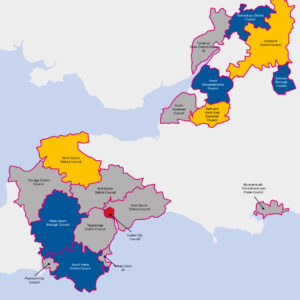At JBP, our expertise encompasses PR, marketing and digital. Public affairs is a key part of our business, led by Nick O’Hara in our Westminster office. Here, he sets out JBP’s approach to public affairs, providing a very high-level overview of the different elements to consider when conducting a UK public affairs campaign.
JBP’s clients haven’t just chosen parliamentary experts with a little black book of political contacts (though we do have that!), but a full strategic support service that is meticulously planned. Our approach to public affairs may not be rocket science, but there is a robust methodology to it. We ‘do’ public affairs taking a strategic campaign approach, which involves being:
- Organised
- Structured
- Systematic
- Insight-driven
The starting point of any public affairs campaign is to be clear on the overall aim, and the objectives underneath that aim… from there everything else follows.
Remember this one tip: planning is everything. The old adage, wrongly attributed to US founding father Benjamin Franklin, holds as true in public affairs as it does elsewhere: if you fail to prepare, you are preparing to fail.
Campaign components
Set out below are some of the key components to consider when approaching a public affairs campaign:
- Situation & context analysis
- Define objectives/ goals
- Define key audiences
- Build coalitions/ alliances
- Identify key messages
- Identify communication channels
- Impact measurement
But keep in mind that this campaign approach is rarely a linear process unless it is for a short-term specific project. More often, for ongoing campaigns, we should be continuously horizon-scanning, monitoring and reviewing. So even when we are in full delivery mode, we are still evaluating what we are doing and providing ongoing quality assurance – which allows us to make adjustments if necessary.
What is the overall aim of a public affairs campaign?
- Most public affairs campaigns seek to achieve policy influence
- Evidence-based public affairs campaign provides purpose & direction
- Clarity on overall aim is required from the outset – does the campaign seek:
- Specific legislative/ regulatory change?
- New government policy/ spending pledge?
- Behaviour change – e.g. buying a new product or investing in a new service?
- Support for a particular call to action?
- Clarity on the above enables us to plan and execute a campaign and measure success
Approach
- Produce a comprehensive campaign plan!
- Scientific (as far as possible), evidence-based, practical insights
- SMART objectives – realistic in terms of goals, time & cost
- Flexible – ongoing to adapt to external changes, modify if not getting cut-through
- 21st Century public affairs is about evidence-based content – what you know is more important than who you know
Much of this might seem obvious, but how often do those involved in public affairs skip the planning and strategy, and jump straight into engagement? How often do we think that our objectives are clear and obvious, so do not commit them to paper in a written plan? Not only is defining objectives critical to the success of a campaign, at JBP we understand that it is critical to client retention: failure to define our objectives and agree on them with the client risks future client dissatisfaction and, ultimately, lost business.
There are some fundamental principles that always hold true in public affairs:
- Building strong relationships is at the core of what public affairs is as a discipline – whether with allies or target audiences
- Coalitions can be a more powerful voice and help our messages to be heard and understood, and ultimately, help us to meet our campaign objectives – the ideal outcome is to get influential 3rd party advocates to deliver our core messages on our behalf
- Our messages need to be underpinned by some sort of insight/ evidence if they are to be taken credibly – the more robust the better
- Our messages should be pitched at aligning to the priorities/ agendas of our target audience to increase the likelihood of them being well-received
- Impact measurement is so important – if we cannot measure impact, how can we demonstrate value to our clients?
Conclusions
- Fail to prepare, prepare to fail! An evidence-based public affairs campaign plan is essential to successful ‘lobbying’ for policy influence
- A well-devised campaign plan based on practical insights provides purpose and direction and will result in a greater chance of success
- The components discussed here are interrelated and can be adapted to a specific issue
- The campaign plan should be realistic in terms of goals, time and costs
- The campaign plan should be flexible: new issues may emerge, others may lose salience – the stakeholder map may alter as a result
- Continuous assessment should be built in to allow for fine-tuning
For more information, please get in touch here!

Nick O’Hara Director of Public Affairs


